The regenerative agriculture world received sad news this week that cover crop pioneer, Dave Brandt, passed away due to a car accident.
I had the honor of meeting Mr. Brandt at his farm back in 2016. He was one of the first farmers I spoke with about their use of cover crops, and I’ll never forget how inspiring it was to hear him talk about his soil health ethic.
As a tribute to Mr. Brandt and his legacy, we’re sharing here at AgPunk some tales from the field, with a focus on farms that are implementing soil health practices. While this post was drafted before Mr. Brandt’s accident, it seems fitting to devote it to him, as one small token of gratitude for the work that he did to make regenerative agriculture popular and more accessible.
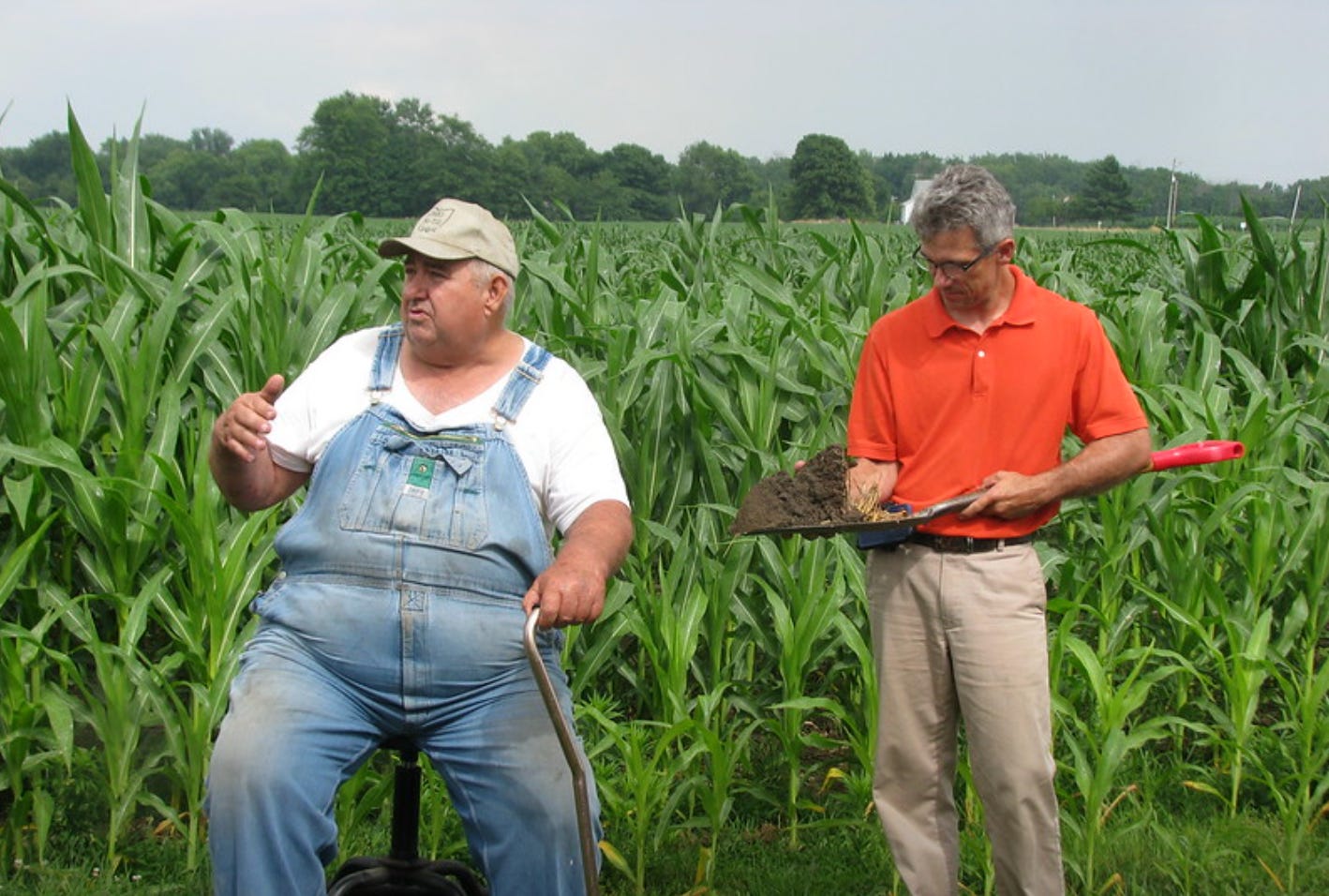
In 2019, while in business school, I took a break from lecture halls and finance classes to go on a tour of Midwestern farms and better understand the challenges farmers face in stewarding their soil health. The trip took me from Minnesota to Missouri, from two huge commercial row crop operations spanning 15,000+ acres to dozens of smaller operations and field days.
This experience gave me perspective about how to better align our agricultural system with environmental stewardship in a way no classroom or staff meeting could. And it gave me hope for the future.
I’m sharing some scenes and reflections from that experience in this edition of AgPunk. I hope these tales can serve as inspiration for those working on cover crop and soil health related endeavors and as reminders of the power of getting out in the field.
The young farmer’s equipment shed
"We left thinking we could change the world."
This is how two young farmers walked away from a cover crop field day, filled with the conviction that they could go home, plant cover crops and change the world. After just two weeks, they'd pooled their resources to purchase a Gandy cover crop seeder. Today, these two farmers lead field days of their own and share their recipes for success with others in their area. Now, I stand listening to them in their equipment shed, wondering how to recreate their story across millions of acres of cropland in the Midwest.
Glancing around, I notice that the growers in attendance are young - under the age of 50. These farmers give off the aura of innovators chasing something beyond yield and profit. Standing in a big circle with the 40 or so attendees as they share their cover cropping experiences, I’m reminded of just how important social networks are to supporting farmers in their innovation process.
These folks seem able to make drastic changes to their farming systems for three primary reasons:
They have at least two more decades of farming ahead of them to motivate them to be the best they can be.
They have friends and neighbors supporting them on their journey.
Most of them seem to take ownership of their agronomic decisions, rarely relying on retailers for advice.
And what really strikes me is that, although these growers do see no-till and cover crops as an investment, they aren't actually sure they'll ever quantify the true benefits of building soil health. They know the benefits are occurring because they can observe them anecdotally, but they don’t seem too concerned with actually quantifying and measuring the impact.
The 25,000 acre office
Not all farmers have the buoyant, change-making energy towards soil health that I witnessed in the equipment shed. Some, it turns out, are more numbers oriented.
I’m now sitting in the office of a farmer that manages over 25,000 acres of cropland. I pulled into the driveway of his family farming operation in the early morning with a gray sky looming overhead. His office is as big as the office of a retailer I visited a few weeks ago, with a full staff working to answer phones, service equipment and manage the day's operations.
We’re discussing his farming operation and philosophy. My key learning from this farmer is that both details and money talk. He definitely possesses the land management ethic typical of most farmers but tempered by the need to run a well-oiled business machine that 17 people rely on for full-time employment and another 30 part-time employees rely on for income during the growing season. In order to transition to a new type of agronomic system, like one with cover crops and no-till, he needs to see the specifics - how will the system impact his operations, yield, profitability and costs?
Although he did mention erosion control as a benefit of no-till and cover cropping, that was about the extent to which he discussed those practices. He's tried them both, and sometimes plants cover crops after harvesting his contracted crops, but no more than that. Soil health, he says, is a big deal, and one way he likes to steward it is through managing equipment traffic and reducing compaction.
He also spoke about the need to tell his story effectively. He sees the public turning its eyes towards agriculture, and he wants to get ahead of the narrative. Soil health practices are a way to do that proactively, but how is he going to get all 25,000 acres planted to cover crops during harvest season?
Spiders and soybeans
Standing in the warm sunlight in the middle of a soybean field, I bring my mind back from its reverie and turn towards the group. I’m at another field day focused on interseeding cover crops. The sun beams down on our group of 30 people as we walk through our host's corn and soybean fields discussing residue, weather, prices, equipment and land ownership.
As I turn back to the group, I’m filled with curiosity and delight upon seeing a small contingent of people crouched around a huge spider web. Suspended between two plants, hovering over corn stubble from the past year, a large, yellow and black spider hangs in a delicate web. Once, I imagine, a peaceful setting, this spider's home has quickly turned into a zoo, with the spider as the main attraction as farmers and conservationists lean close to get a better look.
But merely looking on is not enough for this group. Several people begin grabbing beetles from nearby plants and tossing them into the spider's web. Only one beetle sticks, and the captivated crowd waits with bated breath to see what the spider will do. But, even after minutes pass, our subject does not move to eat the beetle, and the wind begins tossing the web around so that the beetle falls off.
Growing bored, the crowd begins to disperse, back to talking about the best strip-till equipment, where to find good tenants for their land, how to establish cover crops in early-stage corn and whether the crop outlook this year was truly as good as the USDA thinks it'll be. The spider was a needed reminder to take delight in the present, but only long enough until the topics of the day again recaptured the minds of the field day attendees.
As for the spider, I can only imagine that it experienced some relief at no longer being the object of five looming giants' attention, and it, too, likely had other concerns - like dealing with the strong wind that was slowly eating away at its web.
I guess farming isn't so different from keeping up a spider's web. You have small moments of entertainment presented by the natural landscape or the visitors that come through your land, but then must turn your attention to other factors, many of them out of your control - like weather, or market conditions, or the twists and turns of life itself.
LandownersOnly
Where there are farmers, you may also find some non-farming landowners. I’ve met a handful of non-operating landowners at these field days. They all have different reasons for being present at field days, but one theme is common: they want to connect with farmers.
The first landowners I meet are an older couple. We stand near each other waiting for the interseeding field day to begin, and we strike up a conversation. They tell me they own about 80-acres of land nearby, and they’re excited to learn more about cover crops and how to make them work on the land. For the past three generations, their family has been renting out their 80-acres to two generations of another family - so three generations of landlords leasing to two generations of a farming family.
The woman is very interested in land management and in cultivating a better understanding of how she could support her tenant in making sound stewardship decisions. She shares that she'd purchased a bag of pollinator-friendly flowering plants for her farmer tenant to plant in a buffer strip this year, and that he'd planted them but they'd not yet flowered. It was this kind of specific involvement that she enjoys pursuing with her tenant, and that's what brings her to this field day. She wants to know the latest and greatest in profitable stewardship so that she can better support her tenant and advocate for important practices to be put in place on the farm.
Another landowner is a younger gentleman that just acquired land and is searching for stewardship-oriented farmers. His goal in attending the field day is to recruit a young, soil health minded farmer to come operate his land (he did try to recruit me, but I had to say no - how tempting, though!).
Given his stage in life, he doesn't see farming as a promising opportunity for him - he thinks it would take 15 to 20 years of farming for him to get the hang of it and see payoff. Rather, he sees a role as an active, collaborative landowner that helps train and support a young farmer. This is an appealing investment of his time that would help make the most of his land asset while benefiting an aspiring farmer and creating stewardship outcomes, too.
Visiting farms is one of the most inspiring and educational experiences any agricultural professional can ask for. The stories shared here are just a snapshot of the conversations and interactions happening across regenerative farms and ranches in the US today. Like that spider building its web at the interseeding field day, farmers and landowners are building their own social webs to support one another in adopting new, environmentally oriented farming practices. And catalysts like the late Dave Brandt are spreading the word beyond their communities so that the web grows.
Cheers to these innovators, scientists and connectors. I’m so thankful for their impact and effort.
AgPunk Playlist
For some positive punk vibes to accompany your AgPunk reading, check out our playlist on Spotify. In it are themes of liberation, positivity, revolution and pure punk spirit.

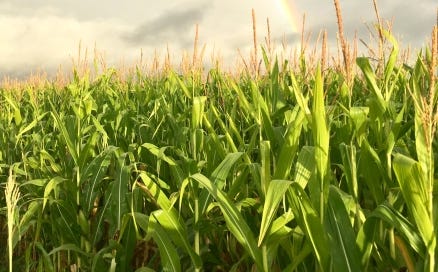


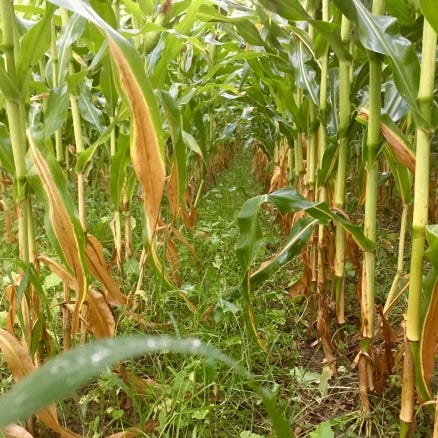
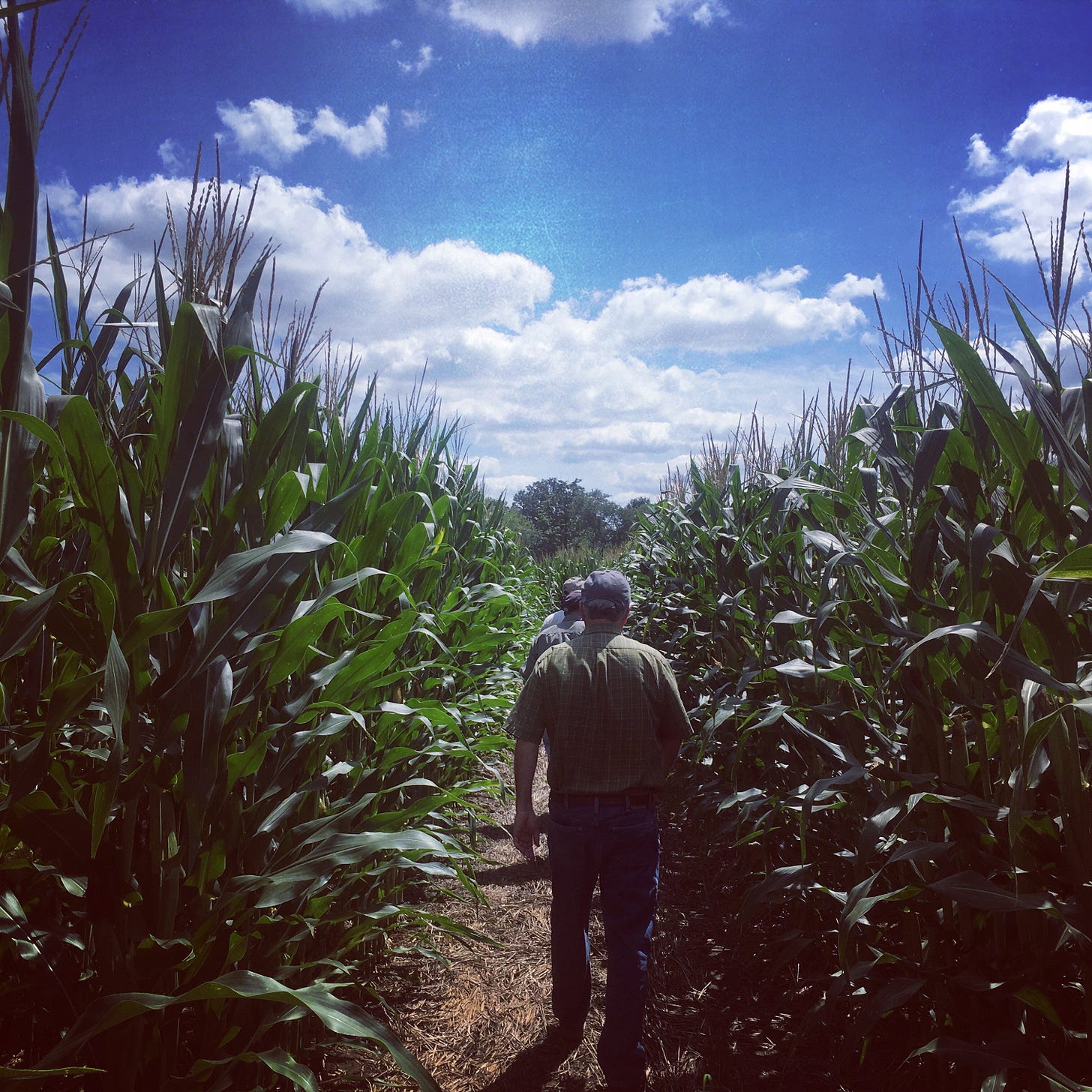
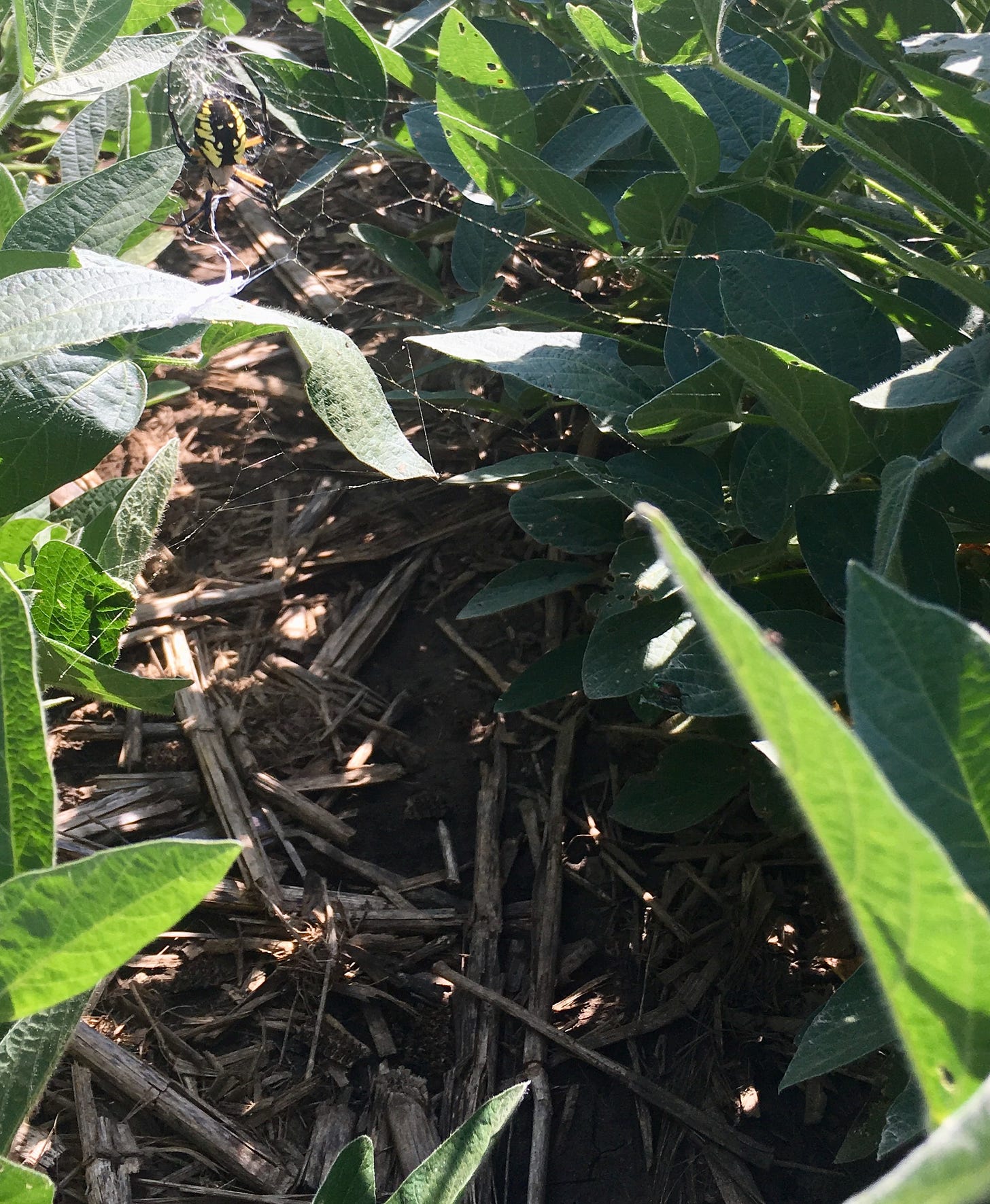

I'm thrilled to read this! My interest is as a science fiction writer who lives in an agricultural area and has written some science fiction westerns with agtech as a background...usually biobots of some sort, but am planning to write more (I *was* calling the genre "agripunk" but no one seemed to resonate with it, so now it's "science fiction western"). In this era, I think there's a lot of potential ag-based stories that could be written...and am kinda sad that I can't seem to encourage other sf writers to take a look at agtech. Amazing stuff going on.